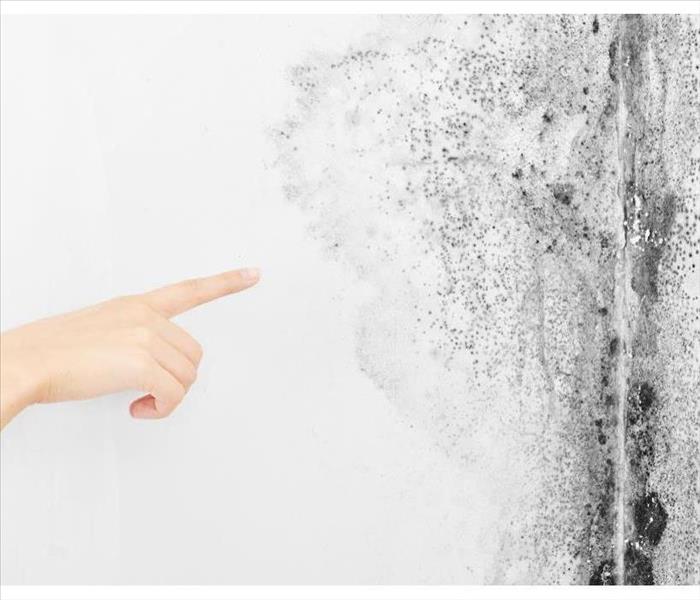Mold vs. Mildew: Know the Difference
9/19/2019 (Permalink)
Finding a discolored patch of organic material in your Clear Lake,TX home doesn’t always mean it’s time to panic. While mold damage is something that quickly needs to be addressed, your problem area may be mildew and not mold.
Spotting the Difference
Though fungus siblings, mildew growth typically won’t cause long-term damage to a home. When determining which you are facing, their visual appearance and where they are growing are key indicators.
Mildew is a surface fungus that often appears powdery or fluffy. It may leave patches that are white, gray or yellow. If it sits long enough, it may begin to turn black, brown or red. It can flourish wherever there are damp surfaces, which may include, floors, ceilings, cardboard, drywall, fabrics, insulation and plants.
Mold can penetrate deep into porous materials. It can take on an array of colors, but usually appears to have a fuzzy or slimy texture. It also loves humidity and dampness, which makes it able to flourish about anywhere there is water damage. Since it penetrates more deeply, it can be harder to eliminate.
Prevention Is Key
Mildew and mold growth both love warm, wet areas. Instead of worrying about potential mold damage or lingering mildew, there are steps to avoid these fungi from make your home their own.
Ensure humidity levels in your home remain constant around 50%.
Attic fans and other ventilation can keep the inside of the home dry.
Especially in bathrooms and kitchens, wipe up any excess water and ensure plumbing fixtures are working properly. Address any leaks as soon as possible to prevent growth.
Enhance indoor air with house plants. If you see any signs of mildew, immediately remove them.
Dry out any clothing, towels or rugs that have been saturated.
While these steps can help you avoid mold damage, bursting pipes or weather can negatively impact your preventive maintenance. If that happens, you can count on professionals that are Here to Help.

 24/7 Emergency Service
24/7 Emergency Service
